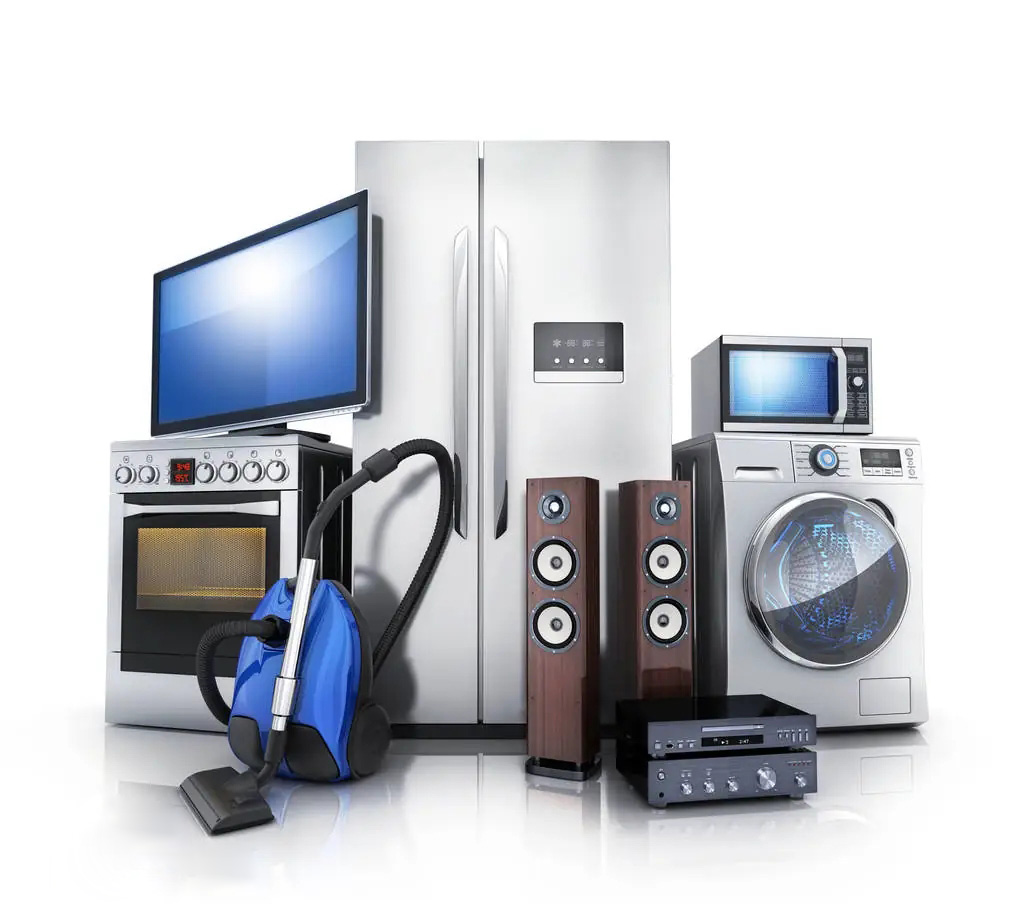household appliances
Household appliances (HEA) Various electrical appliances used in homes and similar places. Also known as civil appliances and household appliances. The United States is the place where household appliances are developed.

In 1879, American T.A. Edison invented the incandescent lamp. Created the era of household electricity consumption. At the beginning of the 20th century, the electric iron invented by American E. Richardson was put on the market, which prompted other household appliances to come out one after another. Vacuum cleaner, electric washing machine, compressor household refrigerator, electric cooker, air conditioner and automatic washing machine came into being.
In the 1980s, the discovery of Edison effect and experiments to verify the existence of electromagnetic waves created conditions for the birth of electronics. At the beginning of the 20th century, Britain, the United States and other countries successively invented the first generation of electronic devices-electron tubes.
The appearance of superheterodyne receiver in 1919 created conditions for the development of radio.
In 1923-1924, American V.K. Zvorekin invented the camera tube and kinescope, which were assembled into the world's first all-electronic TV system in 1931. In 1954, the United States began to broadcast on color television. Magnetic (steel wire) tape recorder and tape recorder came out in 1898 and 1935 respectively. On the basis of the invention of cassette tape in the Netherlands in 1963, cassette tape recorder quickly became popular. The invention of integrated circuits has brought electronic technology into the era of microelectronics technology and raised household appliances to a new level.
The classification method of household appliances has not been unified in the world. However, it is common to classify products according to their functions and uses, which can be roughly divided into 8 categories.
(1) refrigeration appliances. Including household refrigerators, cold drinks machines, etc.
② air conditioner. Including room air conditioner, electric fan, ventilator, cold and hot air blower, air dehumidifier, cold air blower, humidifier, etc.
③ Clean electrical appliances. Including washing machines, clothes dryers, electric irons, vacuum cleaners, floor polisher, sweeping robots, etc.
(4) kitchen appliances. Include electric cookers, microwave ovens, electromagnetic cookers, electric ovens, electric cookers, dish washers, electric water heaters, food processors, etc.
⑤ Electric heaters. Comprises an electric blanket, an electric quilt, a hydrothermal blanket, an electric clothing and a space heater.
⑥ Cosmetic health appliances. Comprise an electric shaver, a hair dryer, a hair dresser, an ultrasonic face washer and an electric massager.
⑦ Audio-visual appliances. Including mini-projector, TV sets, radios, tape recorders, video recorders, video cameras, music centers, etc.
⑧ Other electrical appliances, such as fireworks alarms and electric bells.
With the improvement of life, water purifier has become a member of household appliances, and more and more families use this new type of electrical products: with the serious pollution of most water bodies in the world, the contradiction of water shortage has been aggravated. Traditional tap water treatment methods can no longer guarantee the provision of high-quality drinking water, and there are still secondary pollution problems in municipal water supply, such as high-rise water tank supply and long tap water pipeline, which will all cause potential pollution problems such as rust, sediment and microorganisms. Therefore, all kinds of water purifiers came into being.
Household appliances, referred to as household appliances for short, refer to appliances that are driven (or mechanically acted) by electric energy, which can help to perform household chores, such as cooking, food preservation or cleaning. In addition to the family environment, they can also be used in corporate or industrial environments. Basically, household appliances are divided into large household appliances (white household appliances, black household appliances) and small household appliances.
In December 2009, the pattern of household appliances cities was basically stable. In the LCD TV market, the market share of foreign brands increased, while domestic brands declined, but it was still at a high level. The market generally expects that the competition in the color TV industry will become fierce in 2010, and foreign color TV brands may cut prices drastically to seize market share. At the same time, the competitiveness difference between domestic color TV brands due to panel supply and module self-made will be narrowed.
We believe that the overall share of domestic brands will remain at a relatively stable level, and the high-end market will be more occupied by foreign brands. The competition between domestic brands may become fierce, but more emphasis is placed on characteristic marketing rather than simple price competition.
The competitive strategies of foreign brands in 2010 are basically determined, and most of them still tend to be conservative. Although the share of foreign brands rose month by month in the third quarter of 2009, the average share was still below 30%. Even considering the more radical competition strategy of foreign brands, we believe that their share will remain stable at around 30% in 2010, and there will be no significant improvement.
From the economic point of view, foreign brands are mostly high-end products, and their demand and profit price elasticity are relatively strong. Although some foreign brands launched low-end LCD TV products in the second half of 2009, their additional functions are few. Considering the high-end image of the brand, we judge that the price reduction of its mainstream products will not be too big. The advantages of foreign brands in high-end products such as LED backlight TV may promote their share. We judge that after 2010, the price of LED backlight LCD TV is expected to be reduced by about 20%. Even if the share of foreign brands increases, it will not have much impact on the overall share.



 中文
中文